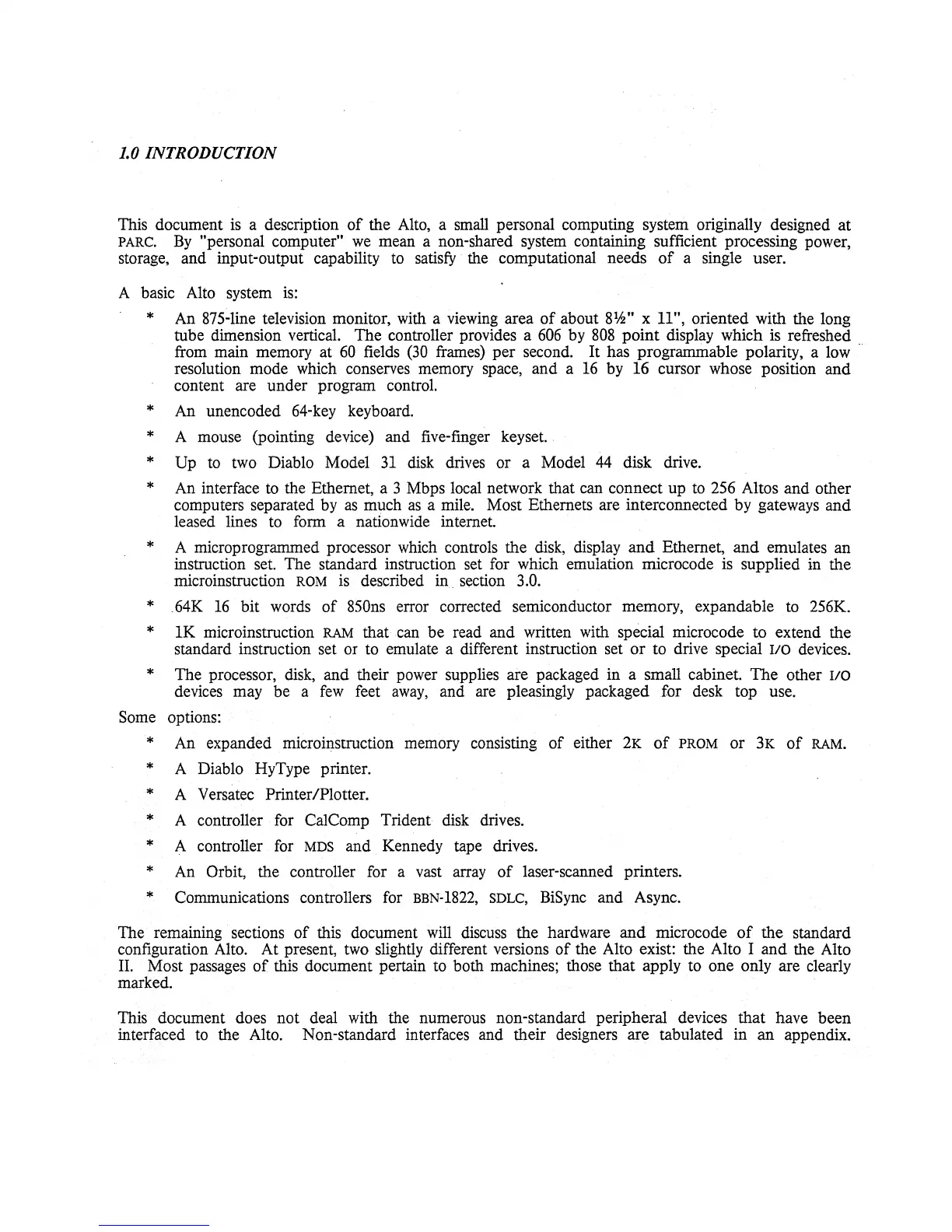1.0 INTRODUCTION
This document
is
a description
of
the
Alto,
a
small
personal computing system originally designed at
PARCo
By
"personal computer"
we
mean a non-shared system containing sufficient processing power,
storage, and input-output capability
to
satisfy
the
computational needs
of
a single user.
A basic Alto system
is:
*
*
*
*
*
*
*
*
*
Some
*
*
*
*
*
*
*
An
875-line television monitor, with a
viewing
area
of
about 8%" x 11", oriented with the long
tube dimension vertical. The controller provides a
606
by
808
point display which is refreshed
from main memory at
60
fields
(30
frames) per second. It has programmable polarity, a
low
.
resolution mode which conserves memory space, and a
16
by
16
cursor whose position and
content are under program control.
An unencoded
64-key
keyboard.
A mouse (pointing device) and five-finger
key
set.
Up
to
two Diablo Model
31
disk
drives or a Model
44
disk drive.
An
interface
to
the Ethernet, a 3 Mbps local network that can connect up
to
256
Altos and other
computers separated
by
as
much
as
a mile. Most Ethernets are interconnected by gateways and
leased lines to form a nationwide internet.
A microprogrammed processor
which
controls the
disk,
display
and
Ethernet, and emulates an
instruction set. The standard instruction
set
for which emulation microcode
is
supplied
in
the
microinstruction
ROM
is
described in. section
3.0.
64K
16
bit words
of
850ns
error corrected semiconductor memory, expandable to 256K.
1K microinstruction
RAM
that
can
be read and written with special microcode to extend the
standard instruction set
or
to
emulate a different instruction set or to drive special
I/O
devices.
The processor,
disk,
and their power supplies are packaged in a small cabinet. The other
I/O
devices may be a
few
feet
away,
and are pleasingly packaged for desk top use.
options:
An expanded microinstruction memory consisting of either
2K
of
PROM or
3K
of
RAM.
A Diablo HyType printer.
A Versatec Printer/Plotter.
A controller
for
CalComp Trident disk drives.
A controller for
MDS and Kennedy tape drives.
An
Orbit, the controller for a
vast
array
of
laser-scanned printers.
Communications controllers for
BBN-1822,
SDLC,
BiSync
and Async.
The remaining sections
of
this document
will
discuss
the hardware and microcode
of
the standard
configuration Alto. At present,
two
slightly different versions
of
the Alto exist: the Alto I and the Alto
II.
Most passages
of
this document pertain to both machines; those that apply to one only are clearly
marked.
This document does not deal with the numerous non-standard peripheral devices that have been
interfaced to the Alto. Non-standard interfaces and their designers are tabulated in an appendix.
